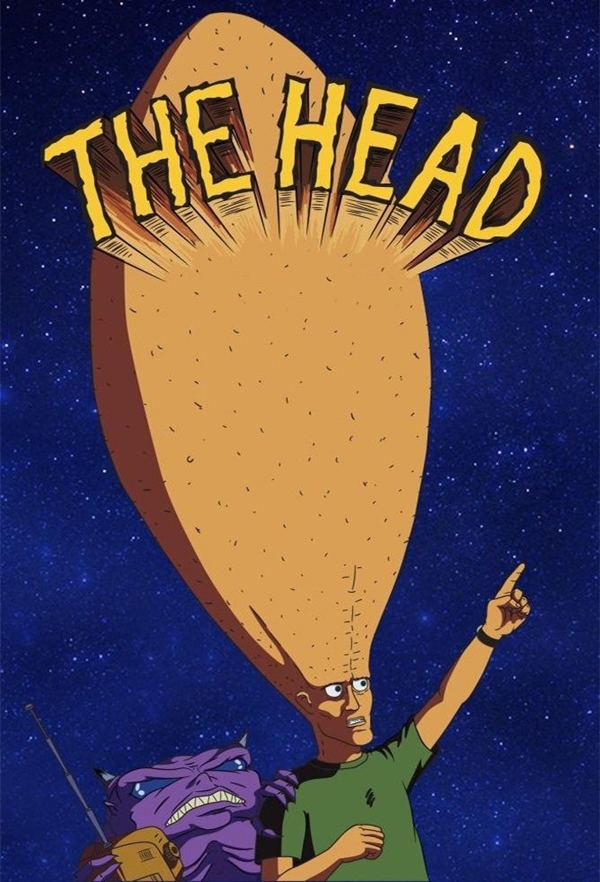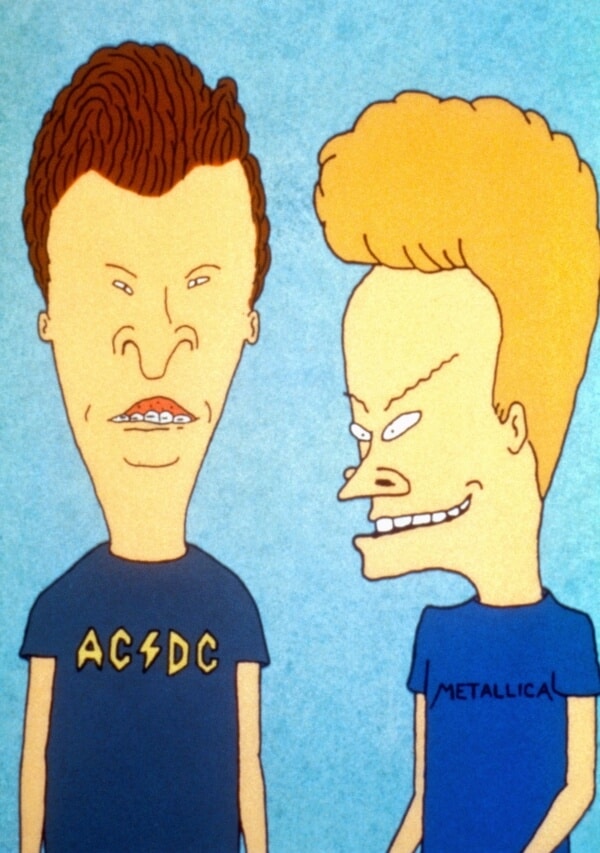Big-Headed Cartoon Characters: The Quirky World Of Animation's Largest Heads!
Apr 17 2025
There’s something undeniably charming about cartoon characters with big heads. They’ve become an iconic part of animation, bringing humor, personality, and a touch of absurdity to our screens. Whether it’s their exaggerated features or the way they dominate the frame, these oversized noggins have left a lasting impression on fans worldwide. So, why do animators love creating characters with such massive heads? And what makes them so memorable? Let’s dive into the fascinating world of cartoon characters with big heads and uncover the secrets behind their appeal.
From classic cartoons to modern animated series, big-headed characters have been around for decades. They’re not just a stylistic choice but a deliberate design decision that adds depth, humor, and even emotional resonance to storytelling. These characters often serve as the heart and soul of their shows, captivating audiences with their unique quirks and larger-than-life personalities.
In this article, we’ll explore everything you need to know about cartoon characters with big heads. We’ll delve into their history, examine why animators love them, highlight some of the most iconic examples, and even discuss how these characters influence the way we perceive animation. So, buckle up and get ready for a deep dive into the quirky and delightful world of big-headed cartoons!
Read also:Bald Cartoon Exploring The World Of Hairless Characters In Animation
Table of Contents
- The History of Big-Headed Cartoon Characters
- Why Do Animators Love Big Heads?
- Iconic Cartoon Characters with Big Heads
- The Impact of Big Heads on Character Design
- Different Animation Styles Featuring Big Heads
- Cultural Significance of Big-Headed Characters
- Popularity Trends in Big-Headed Cartoons
- The Psychology Behind Big Heads in Animation
- Future Directions for Big-Headed Characters
- Conclusion: Why We Can't Get Enough of Big Heads
The History of Big-Headed Cartoon Characters
Cartoon characters with big heads didn’t just appear out of nowhere. Their origins can be traced back to the early days of animation when artists experimented with exaggerated proportions to create more expressive and dynamic designs. Think about it—when you’re trying to convey emotions or tell a story visually, having a larger canvas (aka the head) gives animators more room to play with facial expressions, hairstyles, and other details.
One of the earliest examples of big-headed characters comes from the silent film era. Animators like Winsor McCay, known for his groundbreaking work on "Gertie the Dinosaur," began exploring exaggerated proportions as a way to make their creations more engaging. Over time, this trend evolved into the cartoon style we recognize today, with big heads becoming a staple in everything from Disney classics to modern shows like "The Simpsons."
So, why did big heads stick around? Well, it all boils down to one simple fact: they work! Big heads allow animators to pack a ton of personality into a single character, making them instantly recognizable and unforgettable. Plus, let’s face it—they’re just plain fun to look at.
From Silent Films to Modern Animation
As animation technology advanced, so did the complexity of big-headed characters. Early animators relied heavily on hand-drawn techniques, which meant every detail had to be carefully crafted by hand. Today, computer-generated imagery (CGI) allows animators to push the boundaries even further, creating characters with exaggerated features that defy the laws of physics.
But don’t think for a second that big-headed characters are only a product of modern animation. Some of the most iconic examples come from the golden age of cartoons, including Bugs Bunny, Daffy Duck, and Popeye. These characters may not have had the same level of detail as today’s CGI creations, but their oversized heads were just as impactful in capturing the imagination of audiences.
Why Do Animators Love Big Heads?
Alright, let’s get real for a second—animators aren’t just throwing big heads into their designs because they think it looks cool (although, let’s be honest, it totally does). There’s actually a method to the madness. Big heads serve several important functions in animation, from enhancing storytelling to improving character recognition. Here’s a quick breakdown of why animators can’t seem to get enough of them:
Read also:Nicole Mcnamara Age Unveiling The Rising Stars Journey
- Facial Expressions: A bigger head means more space for expressive features like eyes, mouths, and eyebrows. This allows animators to convey complex emotions without relying on dialogue.
- Character Recognition: In a world where thousands of animated shows compete for attention, having a unique design element like a big head helps characters stand out in a crowded market.
- Humor: Let’s not forget the comedic value of big heads. Whether it’s a slapstick gag involving someone bumping their head or simply the absurdity of seeing such exaggerated proportions, big heads bring a lot of laughs to the table.
And then there’s the whole psychological aspect of it all. Studies have shown that humans are naturally drawn to faces, especially those with exaggerated features. It’s why babies love looking at cartoons with big heads—it’s easier for them to focus on the facial expressions and emotions. Animators tap into this instinctive attraction when designing their characters, ensuring that viewers of all ages can connect with their creations.
Big Heads and the Art of Storytelling
When it comes to animation, storytelling is king. And big heads play a crucial role in helping animators tell their stories more effectively. Think about it—how many times have you watched a cartoon and been completely captivated by a character’s reaction to something? That’s the power of big heads at work.
By giving characters larger canvases to work with, animators can create more dynamic and engaging scenes. Whether it’s a dramatic moment of realization or a hilarious overreaction, big heads allow for a wider range of emotional expression. And let’s be real—that’s what makes animation so magical in the first place.
Iconic Cartoon Characters with Big Heads
Now that we’ve covered the why, let’s talk about the who. Over the years, countless cartoon characters with big heads have captured the hearts of audiences worldwide. Some have become household names, while others remain cult favorites. Here’s a list of some of the most iconic big-headed characters in animation history:
- Homer Simpson: Arguably the most famous big-headed character of all time, Homer Simpson’s oversized noggin has become synonymous with the show’s slapstick humor and heartwarming moments.
- Bender from "Futurama": While technically a robot, Bender’s massive head is a defining feature of his character. It’s also the source of many of the show’s best jokes.
- Bender from "The Flintstones": Fred Flintstone’s big head may not be as exaggerated as some of the others on this list, but it’s still a key part of his design. Who can forget those iconic scenes of Fred bumping his head on things?
- Bender from "Scooby-Doo": Shaggy’s big head is the perfect complement to his laid-back personality. It’s also a great way to emphasize his comedic timing.
Of course, this is just the tip of the iceberg. There are countless other big-headed characters out there, each with their own unique quirks and personalities. Whether you’re a fan of classic cartoons or modern animation, chances are you’ve encountered at least one character with a head that’s way too big for their body.
What Makes These Characters So Memorable?
It’s not just their big heads that make these characters unforgettable—it’s the way they’re written, designed, and brought to life. Each one has a distinct personality that shines through in every scene they’re in. Whether it’s Homer’s love of donuts or Bender’s sarcastic wit, these characters have become cultural touchstones that resonate with audiences of all ages.
The Impact of Big Heads on Character Design
Designing a cartoon character with a big head is no easy task. It requires a delicate balance between exaggeration and believability. After all, if a head gets too big, it risks overshadowing the rest of the character’s design. But if it’s not big enough, it loses its impact. So how do animators strike the perfect balance?
One approach is to use big heads as a way to highlight specific traits or characteristics. For example, a character with an oversized head might have a larger-than-life personality to match. Or, in the case of villains, a big head could symbolize arrogance or overconfidence. By tying the design to the character’s personality, animators can create more meaningful and memorable creations.
Big Heads in Different Genres
While big heads are often associated with comedy, they can also work in other genres. For instance, dramatic or action-oriented shows might use big heads to emphasize a character’s strength or determination. Even horror or thriller series can benefit from big-headed characters, using their exaggerated features to create a sense of unease or tension.
Different Animation Styles Featuring Big Heads
Big-headed characters aren’t limited to any one style of animation. From traditional hand-drawn cartoons to cutting-edge CGI, these oversized noggins can be found in a wide variety of formats. Here’s a look at how different animation styles incorporate big heads:
- 2D Animation: Classic 2D cartoons like "Looney Tunes" and "Tom and Jerry" are full of big-headed characters. The simplicity of the medium allows for more exaggerated designs without overwhelming the viewer.
- 3D Animation: Shows like "The Simpsons" and "Family Guy" take full advantage of 3D technology to create characters with even bigger heads. This added dimensionality gives animators more room to play with proportions and details.
- Stop-Motion Animation: While less common, stop-motion shows like "Robot Chicken" have also embraced big heads, using them to add a layer of absurdity to their already quirky worlds.
Big Heads Across Cultures
Interestingly, the trend of big-headed characters isn’t limited to Western animation. Japanese anime, for example, often features characters with oversized heads as a way to emphasize cuteness or innocence. This cross-cultural appeal speaks to the universal nature of big heads in animation—they’re a design element that transcends borders and languages.
Cultural Significance of Big-Headed Characters
Big-headed characters have had a profound impact on popular culture, influencing everything from fashion to toys to video games. Their exaggerated proportions have become synonymous with the cartoon aesthetic, making them instantly recognizable to people around the world.
But their influence doesn’t stop there. Big-headed characters have also played a role in shaping our perceptions of beauty and individuality. By celebrating characters with unconventional features, animation has helped break down societal norms and encourage acceptance of diversity in all its forms.
Big Heads and Social Commentary
Some animators have even used big-headed characters as a vehicle for social commentary. By exaggerating certain traits or features, they can highlight issues like consumerism, vanity, or the pressures of modern life. It’s a clever way to tackle serious topics while still maintaining the lighthearted tone that cartoons are known for.
Popularity Trends in Big-Headed Cartoons
Over the years, the popularity of big-headed cartoons has waxed and waned. In the early days of animation, big heads were everywhere. But as the medium evolved, some animators began to shy away from the trend, favoring more realistic designs instead. However, with the rise of shows like "The Simpsons" and "Family Guy," big heads made a triumphant return, proving that they’re here to stay.
Today, the popularity of big-headed characters shows no signs of slowing down. With new technologies allowing for even more exaggerated designs, animators are finding new and creative ways to incorporate big heads into their work. Whether it’s through CGI, traditional animation, or something entirely new, the future looks bright for these oversized noggins.
What’s Driving the Trend?
So, what’s behind the enduring popularity of big-headed characters? Part of it has to do with nostalgia—many of today’s animators grew up watching classic cartoons with big heads, and they’re eager to pay homage to those influences. But there’s also a practical side to it—big heads simply work. They’re a proven design element that resonates with audiences and helps tell compelling stories.
The Psychology Behind Big Heads in Animation


